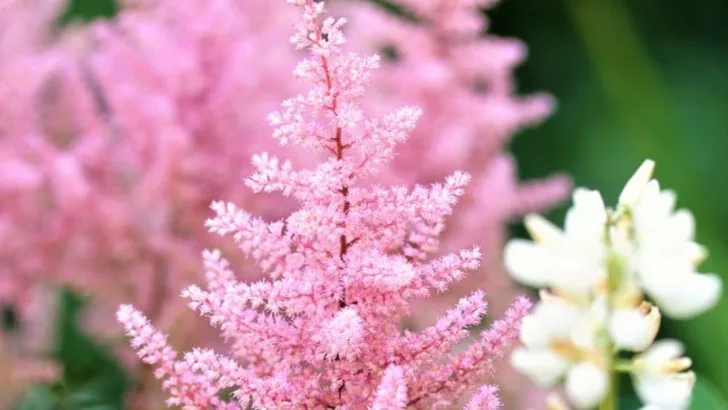A lush, colorful garden isn’t just for sunny spaces—there are plenty of beautiful flowers that thrive in the shade! Starting these blooms from seed now will ensure a stunning display by summer, filling your garden with vibrant colors and rich textures, even in the shadiest corners.
In this article, we highlight 23 shade-loving flowers that you can start from seed today for a breathtaking summer garden. From delicate woodland blooms to bold, eye-catching varieties, these flowers will bring life and beauty to any shaded area in your yard!
Astilbe
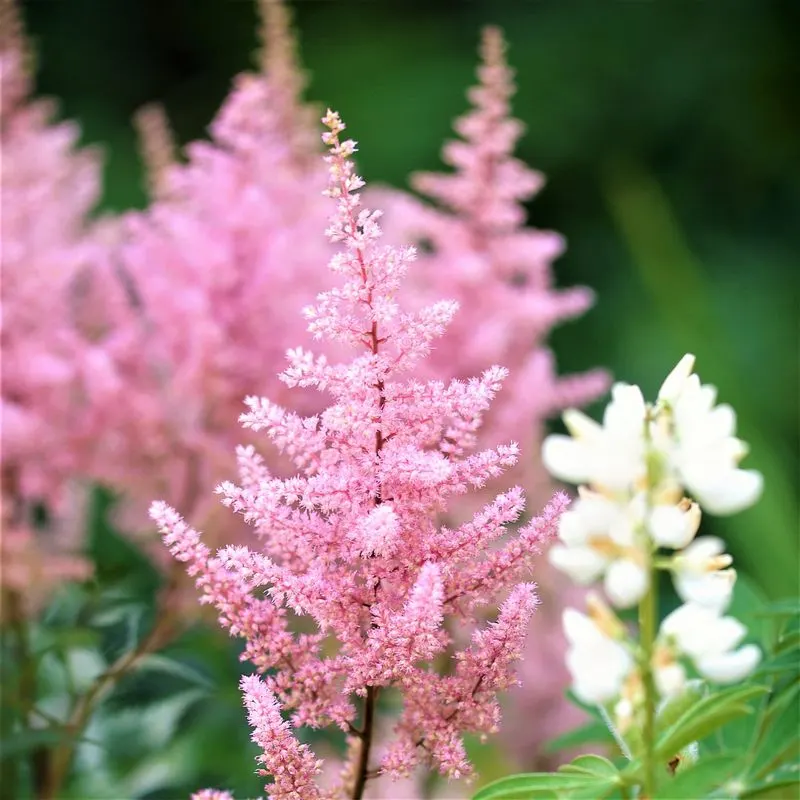
Astilbes are known for their feathery plumes that come in shades of pink, red, and white. These flowers are a great choice for shaded gardens, thriving in moist, well-drained soil. When starting astilbe from seed, you’ll need to be patient, as germination can take two to four weeks. Water consistently to keep the soil moist but not soggy. They appreciate a rich, organic soil mix. Once established, astilbes can bring a soft, ethereal look to your shaded areas. Consider planting them in clusters for a more dramatic effect.
Begonia

Begonias are a versatile choice for shade gardens, offering an array of colors like red, pink, and white. When starting from seed, begonias require warmth and humidity, making a greenhouse or indoor setup ideal. Use a seed-starting mix and cover the seeds lightly, as they need light for germination. With proper care, they’ll reward you with continuous blooms throughout the summer. Regular watering and feeding with a balanced fertilizer will keep the plants healthy. Their vibrant colors and lush foliage make begonias a standout choice for any shaded area.
Caladium
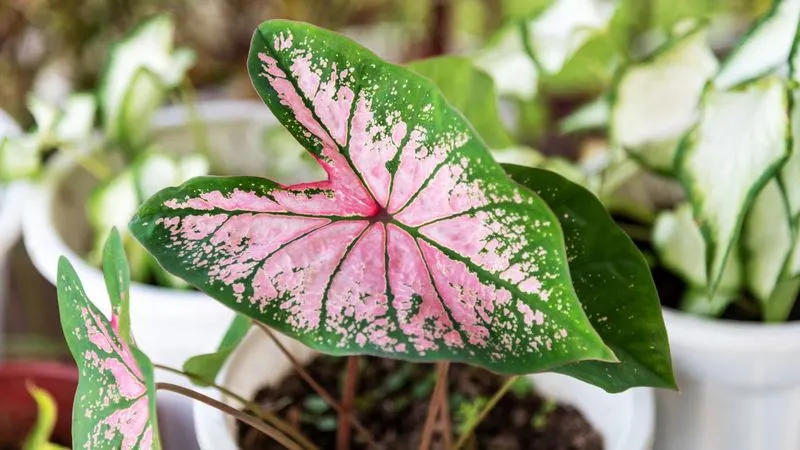
Caladiums are prized for their striking foliage rather than their flowers. Their large, heart-shaped leaves come in a variety of colors, including pink, white, and green. Caladiums thrive in shaded areas, but they do need warmth to grow, so starting them indoors is beneficial. Use a well-draining potting mix and keep the soil consistently moist. These plants are perfect for adding a tropical feel to your garden. As they mature, their vibrant leaves create a beautiful contrast against darker backgrounds, making them a favorite for gardeners seeking bold visual interest.
Coleus

Coleus is celebrated for its colorful, variegated leaves, which come in a wide range of hues including red, purple, green, and yellow. These plants are easy to grow from seed and do well in shaded areas. Ensure the seeds are sown on the surface of the soil as they require light to germinate. Coleus prefers a warm environment and regular watering, without allowing the soil to become waterlogged. They thrive in containers as well as garden beds, providing versatility in design. Pruning helps maintain a bushy appearance and encourages more vibrant foliage.
Foxglove
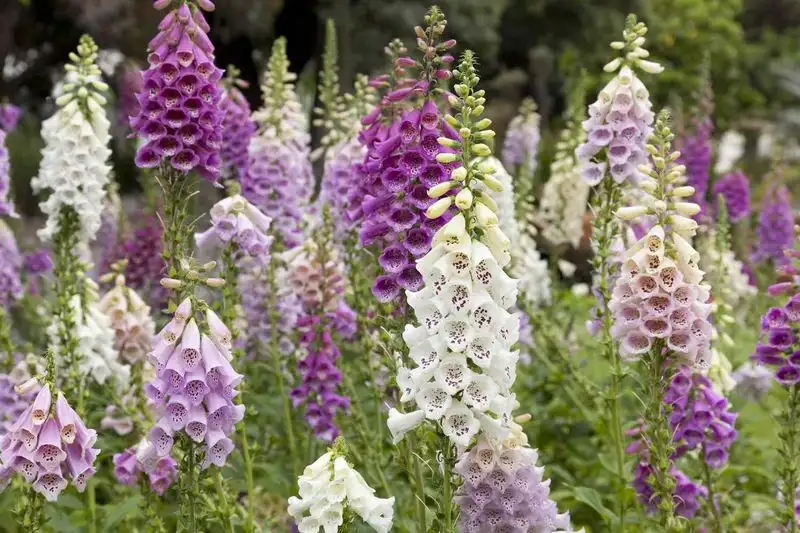
Foxgloves are known for their tall, elegant spikes of tubular flowers, typically in shades of pink, purple, and white. These biennials thrive in partial shade, adding vertical interest to your garden. Starting foxgloves from seed requires patience, as they can take a year to bloom. Sow seeds thinly on the surface and keep the soil moist during germination. Once established, they are relatively low-maintenance. Their height and striking appearance make them ideal for the back of borders or woodland gardens. Foxgloves are also excellent for attracting pollinators, adding biodiversity to your space.
Heuchera
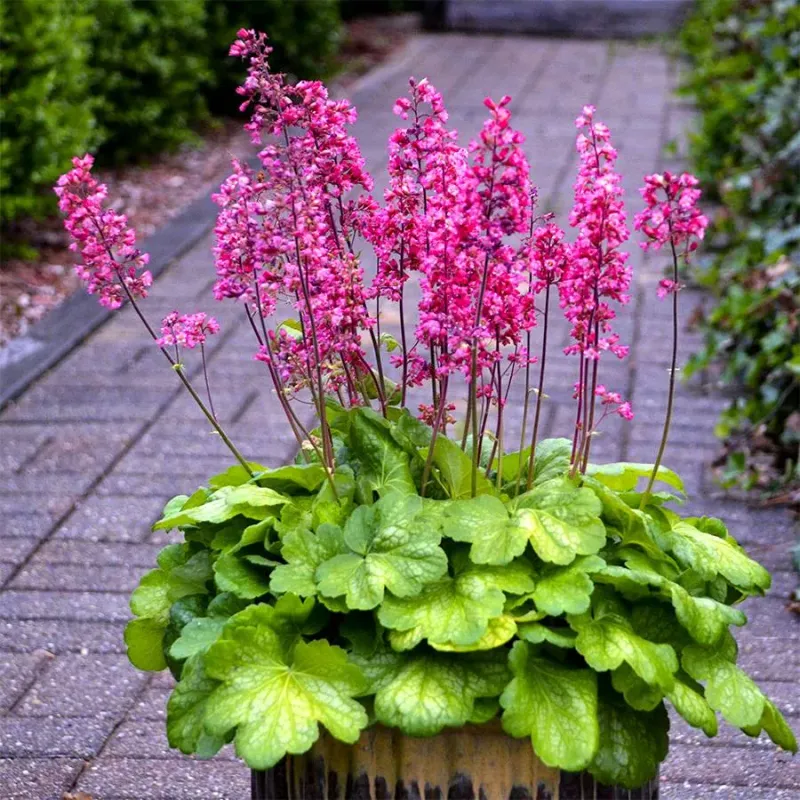
Heucheras, or coral bells, are prized for their vibrant foliage, which comes in a variety of colors such as purple, peach, and silver. These perennials thrive in shaded areas and are relatively easy to start from seed. Use a well-draining potting mix and keep the seeds moist but not waterlogged. Heucheras are perfect for adding color to borders and containers. They are also deer-resistant, making them a practical choice for gardens in areas with wildlife. The foliage provides year-round interest, while the delicate flowers attract hummingbirds during the spring.
Hosta
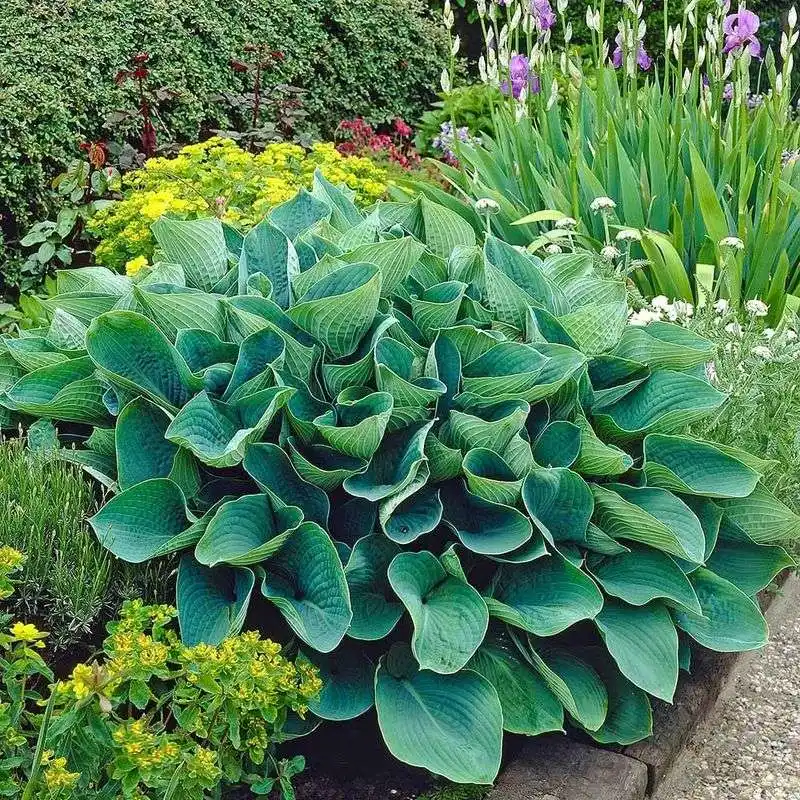
Hostas are a staple in shade gardens, known for their large, lush leaves that can vary in color from deep green to blue and even variegated patterns. They are relatively easy to start from seed, though germination can take several weeks. Use a cold frame or indoor setup to give them a strong start. Once established, hostas require minimal care, thriving in rich, moist soil. Their foliage creates a calming effect, making them perfect for filling large areas under trees or alongside walkways. Hostas are also known for their fragrant flowers that bloom in summer, attracting pollinators.
Impatiens
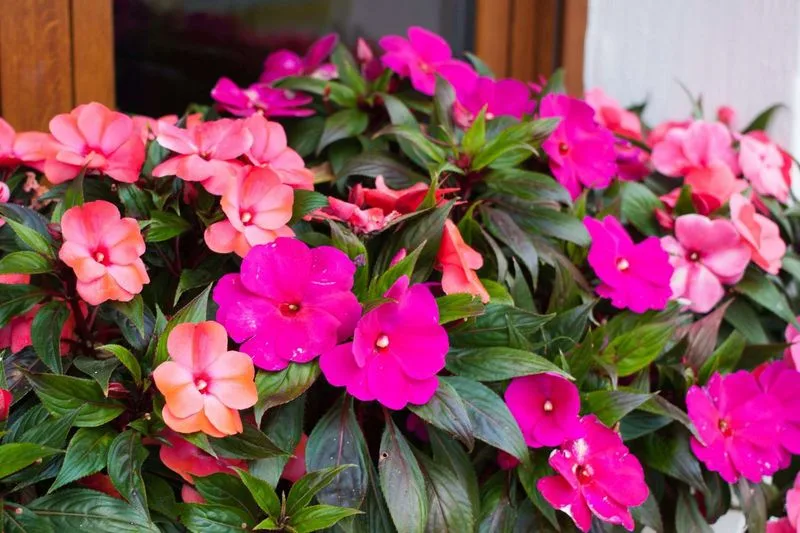
Impatiens are a favorite for adding a splash of color to shaded gardens. These annuals are easy to grow from seed, preferring well-drained soil and regular watering. They come in a variety of colors, including red, pink, and orange, and bloom continuously through the summer. To start impatiens from seed, sow them indoors about 8-10 weeks before the last frost. They require warmth and light for germination, so a sunny windowsill or grow light is ideal. Impatiens are perfect for containers, hanging baskets, and garden beds, offering versatility in your garden design.
Lobelia
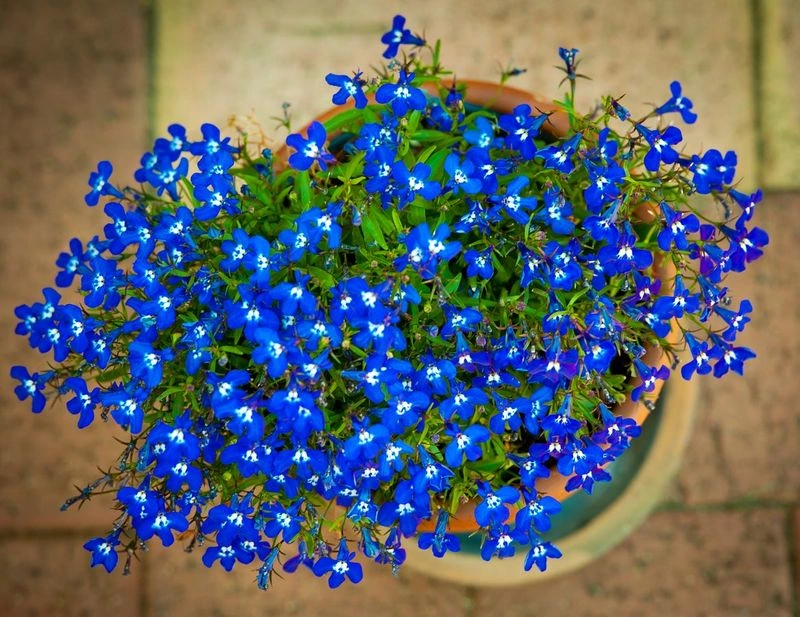
Lobelia is beloved for its delicate, cascading blooms that can add a pop of color to any shaded area. The flowers typically come in shades of blue, purple, and white, and are perfect for hanging baskets and borders. When starting lobelia from seed, sow them indoors about 8-10 weeks before the last frost. They prefer cool conditions to germinate, so avoid placing them in a hot location. Lobelias are relatively low-maintenance once established, requiring regular watering and a bit of shade to thrive. Their charming appearance makes them a delightful addition to any garden.
Lungwort
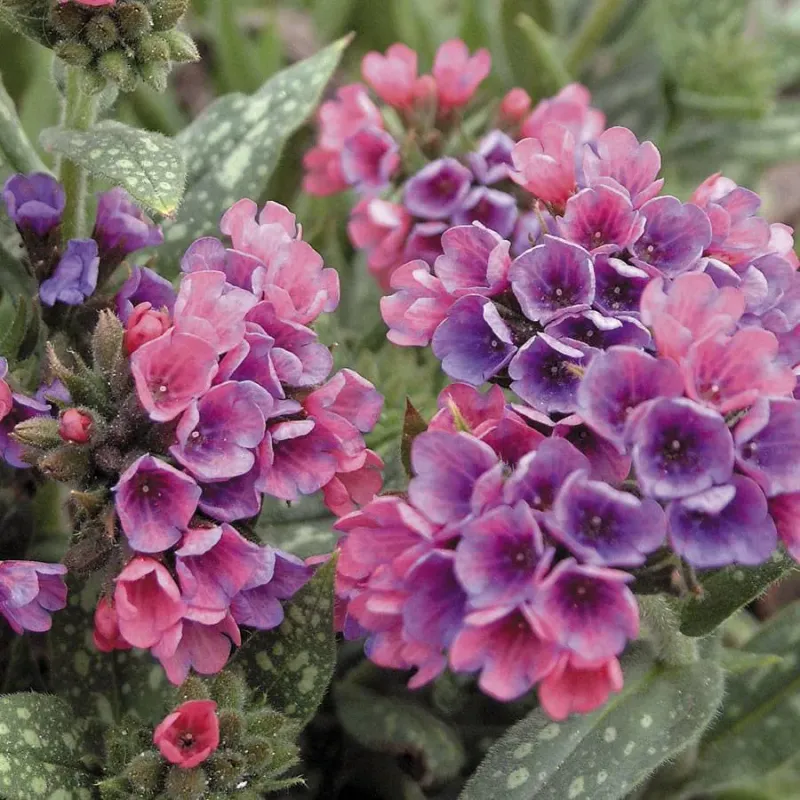
Lungwort, known for its spotted leaves and clusters of pink and blue flowers, is a charming addition to any shade garden. These perennials thrive in moist, well-drained soil and prefer dappled shade. Starting lungwort from seed can be challenging, as germination is slow and often erratic. Sow the seeds in a cold frame or indoors, keeping the soil consistently moist. Once established, lungwort requires little maintenance and can tolerate dry spells. Their unique foliage and delicate blooms make lungwort ideal for woodland gardens, adding texture and color to shaded corners.
Primrose
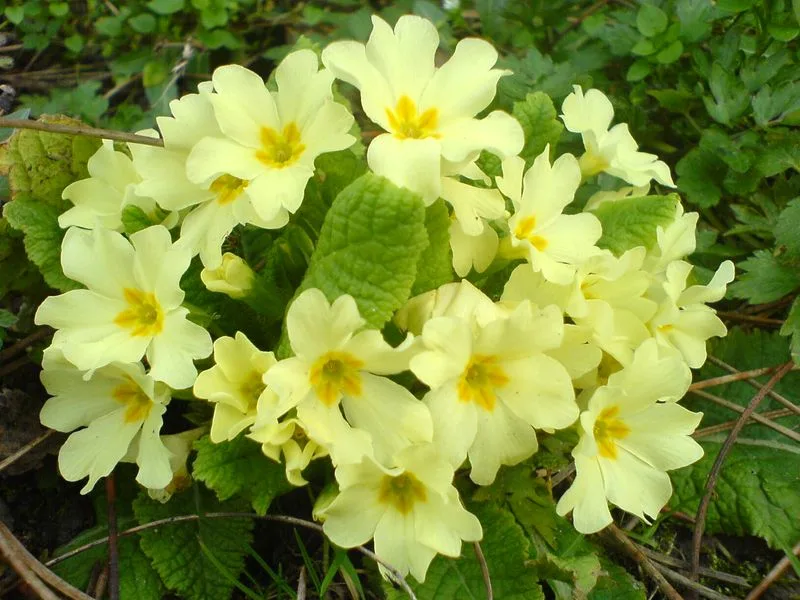
Primroses are one of the first flowers to bloom in spring, offering a cheerful splash of color with shades ranging from yellow to pink and purple. They prefer shaded areas with moist, well-drained soil. When starting from seed, primroses require stratification, meaning the seeds need a period of cold to germinate successfully. Sow them in pots and place them in a refrigerator for a few weeks before moving them to a warm spot. Regular watering and protection from harsh sunlight will ensure vibrant blooms. Their versatility makes primroses ideal for borders and containers.
Pulmonaria
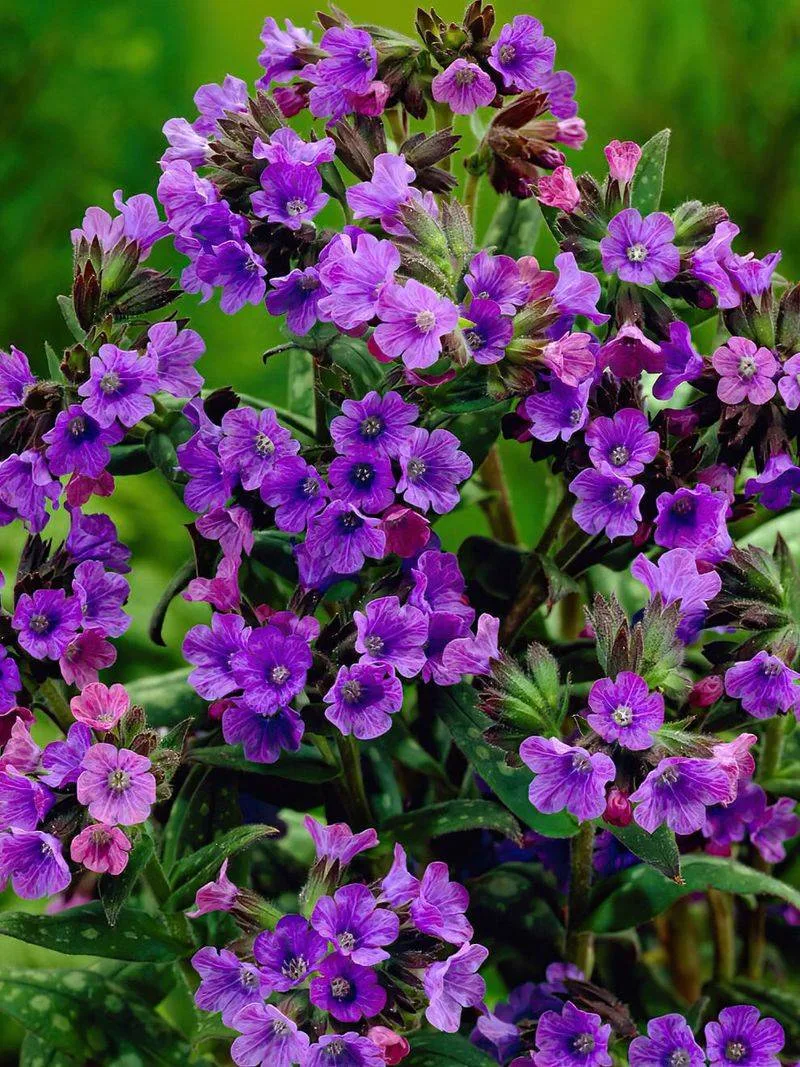
Pulmonaria, often called lungwort, is cherished for its spotted leaves and clusters of pink and blue flowers. This perennial thrives in shaded areas with moist, well-drained soil. Starting pulmonaria from seed requires patience, as germination can be slow. Sow seeds in a cool environment and keep the soil consistently moist. Once established, these plants require minimal care and can tolerate drought conditions. Their unique foliage and charming blooms attract pollinators, making them a functional addition to any garden. Pulmonaria’s whimsical look is perfect for woodland gardens or shaded borders.
Tiarella
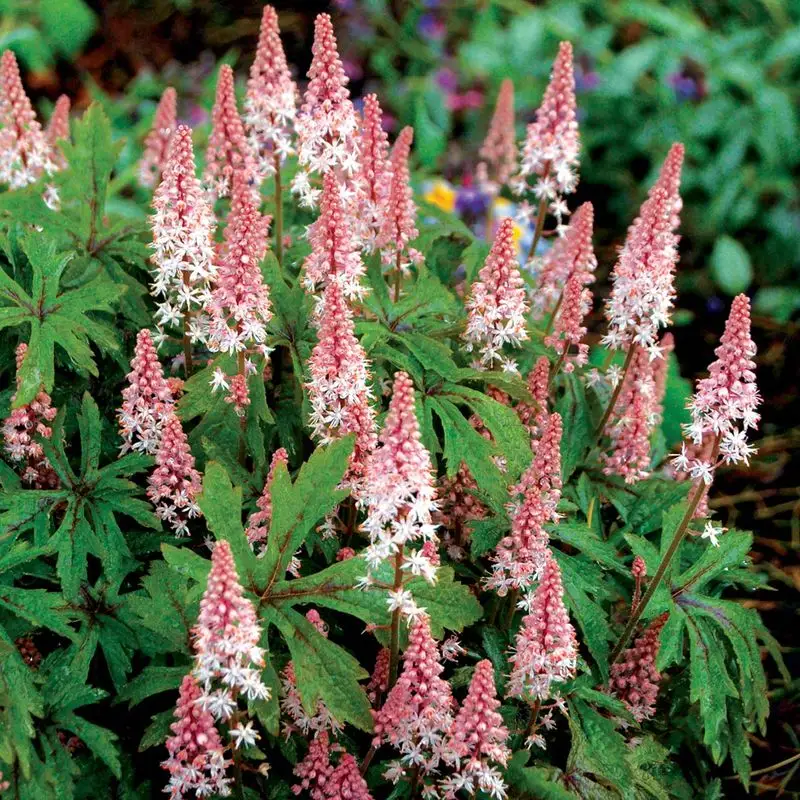
Tiarella, or foamflower, adds a touch of elegance to shaded gardens with its delicate, lacy foliage and flower spikes of white and pink. These perennials prefer cool, shaded areas with rich, well-drained soil. When starting tiarella from seed, sow them indoors or in a cold frame to ensure controlled conditions. The seeds require light to germinate, so do not cover them heavily. Regular watering is essential to keep the soil moist. Tiarella is ideal for woodland gardens, providing a gentle, airy texture that complements other shade-loving plants.
Trillium
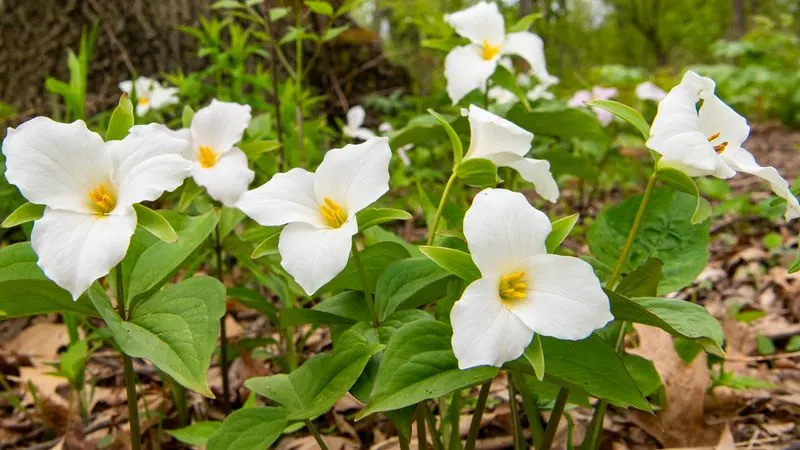
Trilliums are a classic choice for woodland gardens, cherished for their distinctive three-petaled flowers in shades of white and deep red. These perennials are best grown from seed, though patience is key, as they can take several years to mature. Sow the seeds in a cool, shaded spot, keeping the soil moist but well-drained. Trilliums thrive in rich, organic soil and require minimal care once established. Their unique form and color make them a standout choice for adding interest to shaded areas. Trilliums also play a vital role in native ecosystems, supporting local wildlife.
Viola
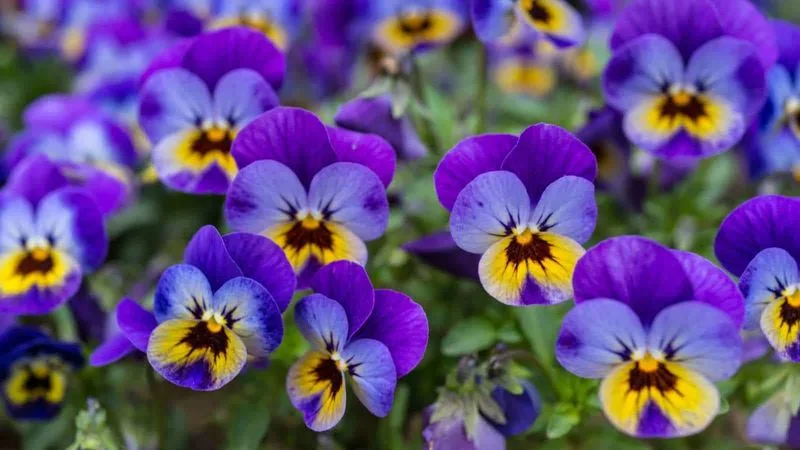
Violas are delightful additions to shade gardens, providing a burst of color with their small, vibrant flowers. These annuals are easy to grow from seed, preferring cool conditions and well-drained soil. Sow the seeds indoors or in a cold frame, ensuring they receive ample light for germination. Violas are known for their resilience, blooming from spring through fall with minimal care. Regular deadheading encourages continued flowering. Their compact size makes them perfect for borders, containers, or even as ground cover. Violas’ cheerful appearance can brighten up any shaded spot in your garden.
Waldsteinia
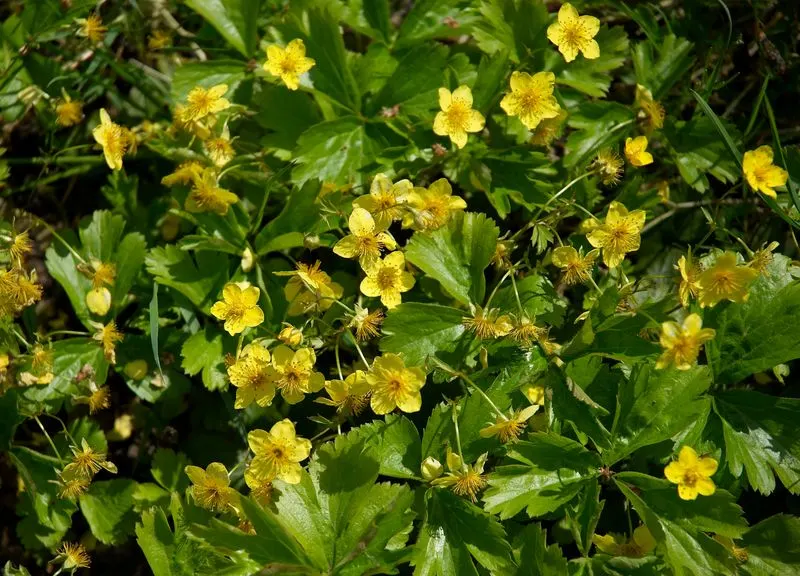
Waldsteinia, also known as barren strawberry, is an excellent ground cover option for shaded areas. This perennial features bright yellow blooms that contrast beautifully with its rich green foliage. Starting waldsteinia from seed is straightforward, but patience is required as they can take time to establish. Sow the seeds in a well-drained, shaded location and keep the soil moist. Once established, waldsteinia requires minimal maintenance and is relatively drought-tolerant. Its spreading habit makes it ideal for covering large areas, creating a carpet of color under trees or alongside paths.
Astilboides
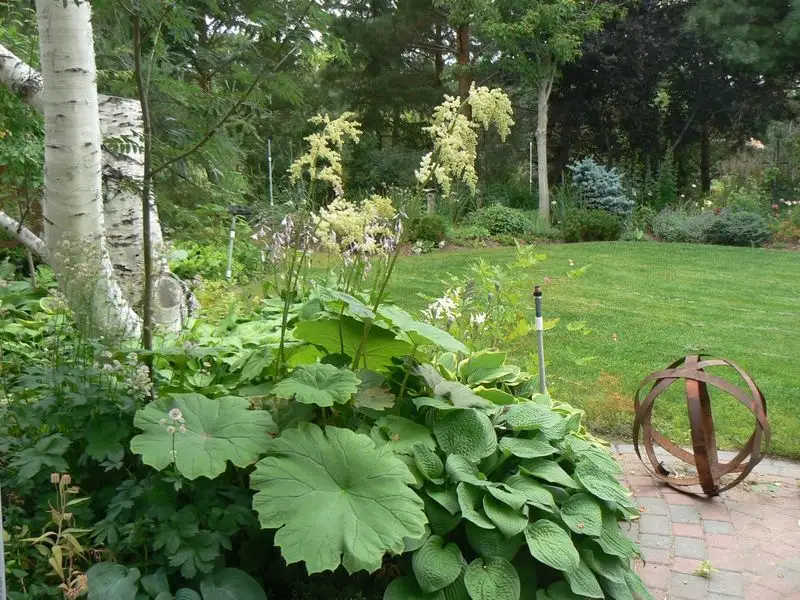
Astilboides stands out in any shade garden with its large, umbrella-like leaves that create a dramatic foliage effect. These perennials thrive in moist, shaded environments and can be started from seed indoors. Use a rich, well-draining potting mix and keep the soil consistently moist. Astilboides prefer cooler temperatures, making them ideal for woodland settings. As they mature, their leaves provide a striking backdrop for other shade-loving plants. Tiny, white flower clusters emerge in summer, adding an extra layer of interest. They are perfect for adding architectural elements to your garden.
Cimicifuga
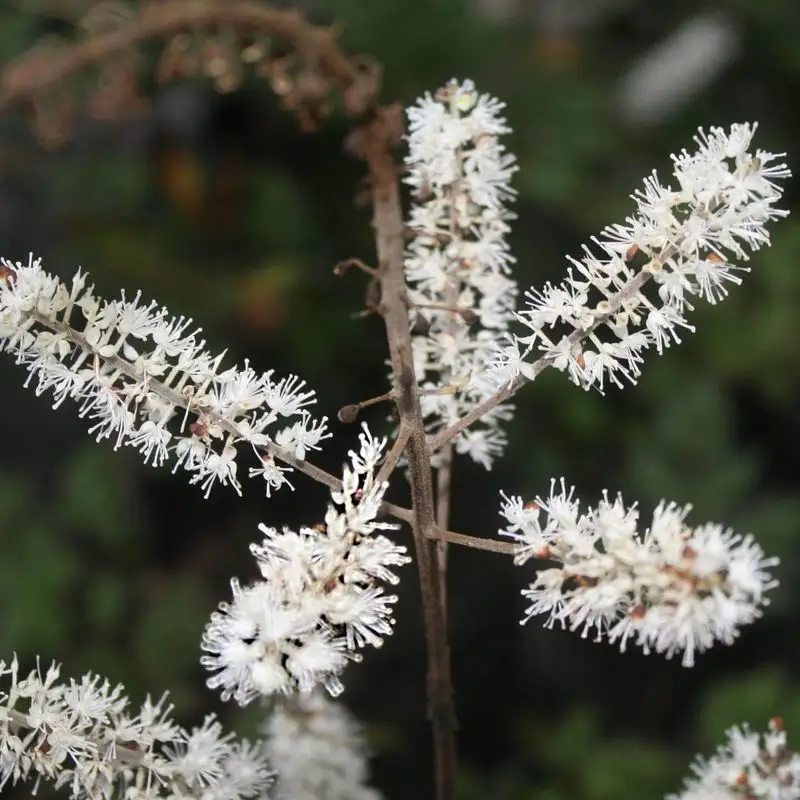
Cimicifuga, or black cohosh, brings elegance to shaded gardens with its tall, feathery flower spikes in white and lush, dark foliage. This perennial prefers moist, well-drained soil and thrives in partial to full shade. Starting cimicifuga from seed requires patience; stratification is often needed for successful germination. Sow seeds in pots and refrigerate for several weeks before moving them to a warm spot. Once established, cimicifuga provides vertical interest and pairs beautifully with ferns and hostas. Their fragrant blooms attract pollinators, adding ecological value to your garden.
Dicentra
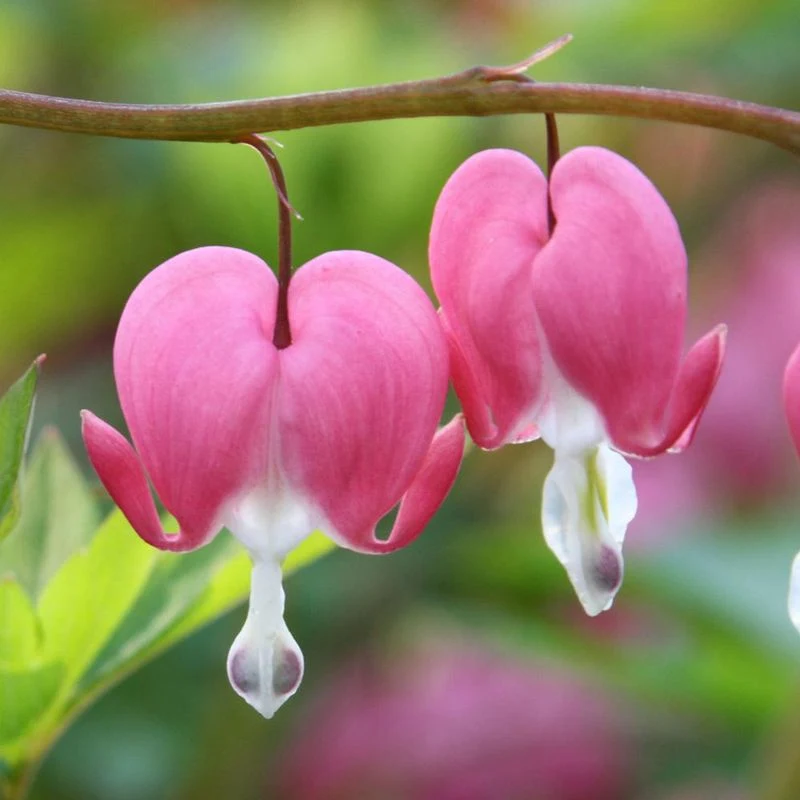
Dicentra, commonly known as bleeding heart, captivates with its heart-shaped flowers in shades of pink and white. These perennials are ideal for shaded areas, particularly in woodland or cottage gardens. Starting dicentra from seed can be slow, as germination requires cool temperatures and moist soil. Once established, they require minimal maintenance and thrive in rich, organic soil. Their delicate blooms appear in spring, adding a romantic touch to your garden. Dicentra’s unique form and color make it a beloved choice for gardeners seeking to add charm and whimsy to shaded spaces.
Epimedium
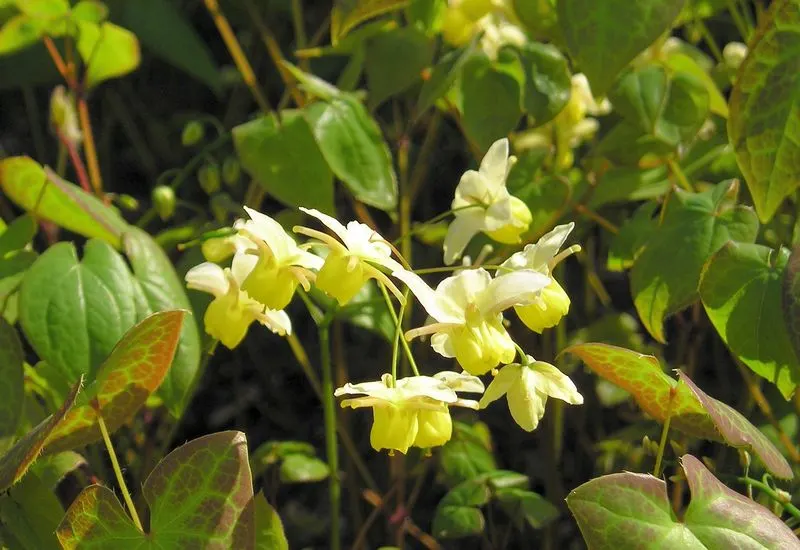
Epimedium, also known as barrenwort, is perfect for shaded gardens with its delicate, colorful flowers and heart-shaped leaves. These perennials thrive in well-drained soil and are relatively drought-tolerant once established. Starting from seed can be challenging, as germination is often slow and requires patience. Plant seeds in a cool, shaded area or indoors under controlled conditions. The foliage remains attractive throughout the year, providing interest even when not in bloom. Epimediums are excellent for ground cover, offering a subtle yet elegant touch to woodland gardens and shaded borders.
Fuchsia
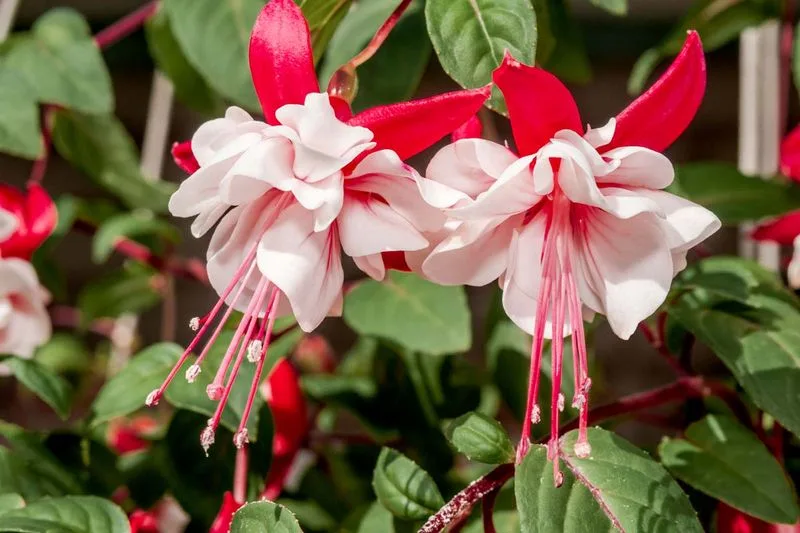
Fuchsias are beloved for their pendulous flowers that come in striking colors such as red, pink, and purple. Ideal for hanging baskets and shaded areas, they bring a touch of elegance to any garden space. Starting fuchsias from seed requires warmth and consistent moisture. Sow seeds indoors about 10-12 weeks before the last frost. They prefer a rich, well-draining soil mix and benefit from regular feeding. With proper care, fuchsias bloom prolifically throughout the summer. Their enchanting blooms and graceful form make them a favorite for adding vertical interest to shaded patios or porches.
Lamium
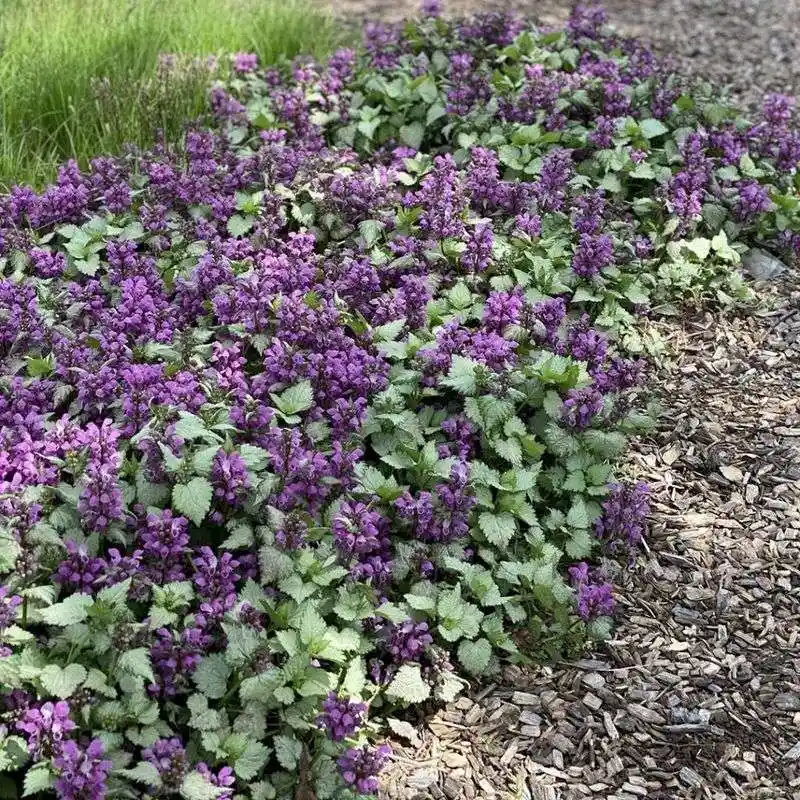
Lamium, commonly known as dead nettle, is a versatile ground cover for shaded areas. Its silver-patterned foliage and small, pink or white flowers brighten up any garden path or border. Starting lamium from seed is relatively easy, and they thrive in well-drained, moist soil. Sow seeds indoors or in a cold frame for controlled conditions. Once established, lamium is low-maintenance and can tolerate dry spells. Its spreading nature makes it ideal for covering bare spots and creating a lush appearance. Lamium’s attractive foliage provides year-round interest, making it a reliable choice for shade gardens.
Lunaria ‘Moonlit Dream’
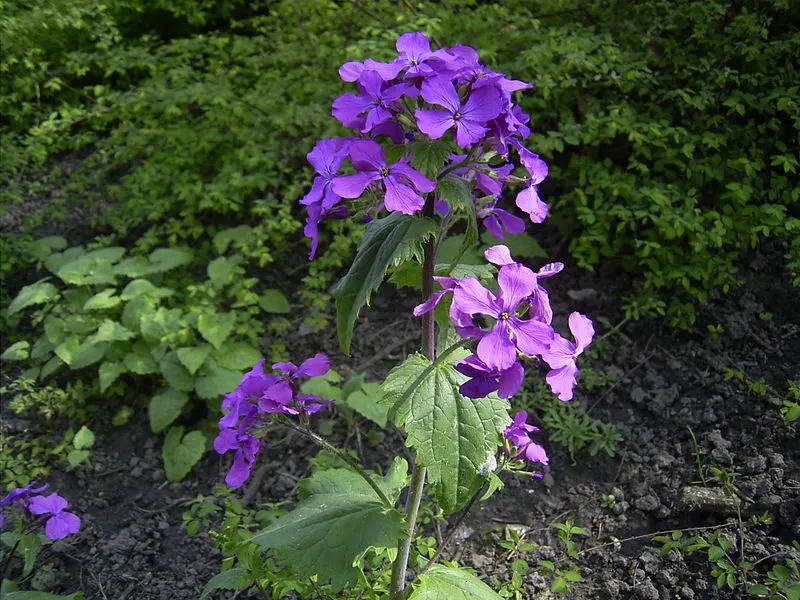
Lunaria ‘Moonlit Dream’ is an enchanting choice for those seeking something extraordinary in their shade garden. This flower showcases ethereal, translucent blooms that seem to shimmer under the dappled light.
Growing from seed, ‘Moonlit Dream’ reaches maturity swiftly, offering blooms by early summer. Its delicate white flowers contrast beautifully against lush green foliage, making it a striking centerpiece in shaded areas.
Perfect for woodland settings, it thrives in cooler, shaded spots, adding a dreamlike quality. An unexpected yet captivating addition, it invites admiration and adds an air of mystery to your garden.

